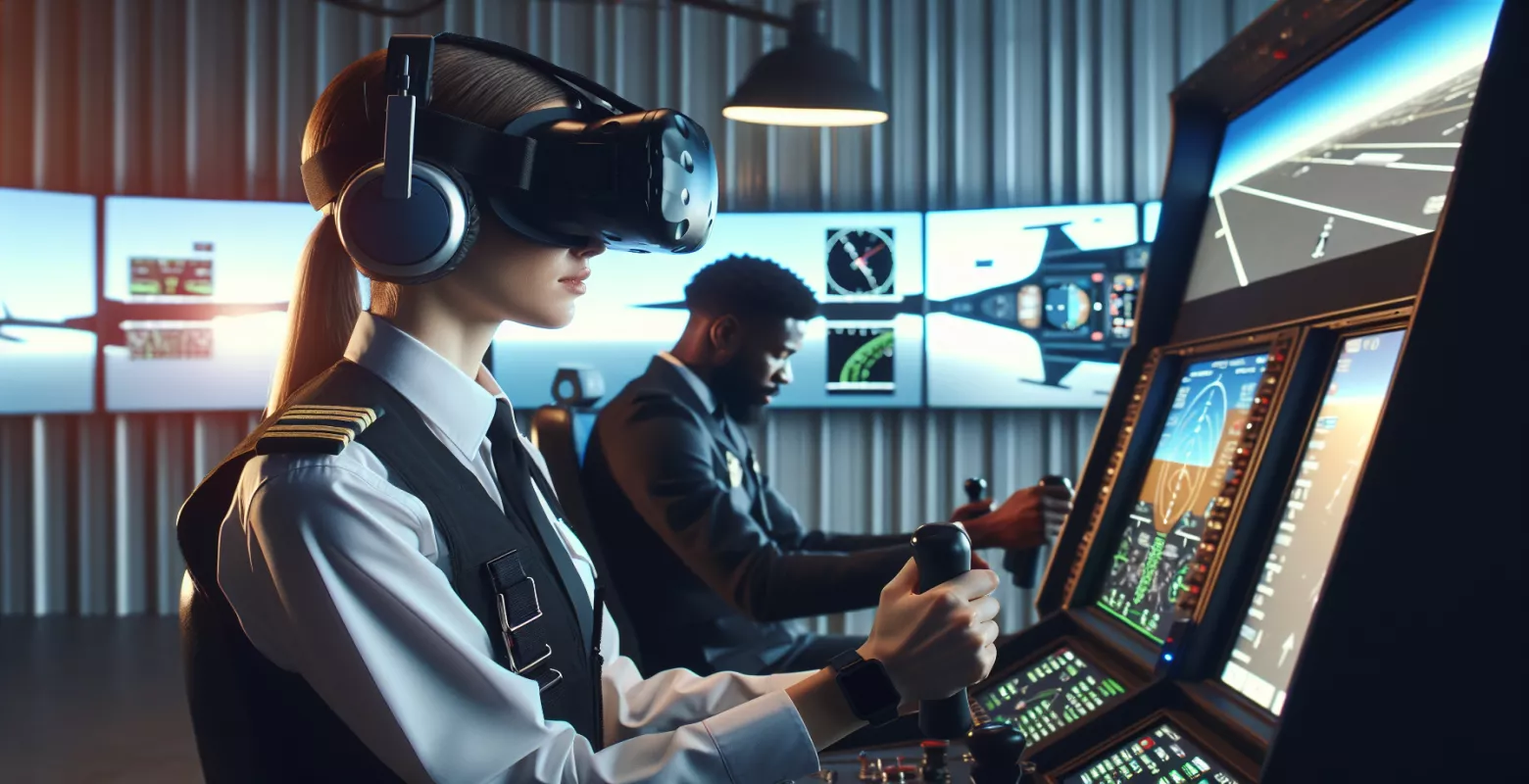Modern Pilot Training Methods – VR and Simulators
Introduction
In today's world, the aviation industry is experiencing dynamic growth, and one of the key aspects of this expansion is pilot training. Traditional training methods, though effective, are often expensive and time-consuming. In response to these challenges, the aviation industry is increasingly turning to modern technologies such as virtual reality (VR) and advanced flight simulators. These innovative training approaches not only reduce costs but also increase efficiency and safety. In this article, we will take a closer look at how VR and simulators are changing the way pilots are trained, the challenges these technologies face, and the benefits they may bring in the future.
Virtual Reality (VR) in Pilot Training
Virtual reality is a technology that allows the creation of a realistic, three-dimensional simulation environment in which users can immerse themselves and interact. With VR, future pilots can experience realistic flight scenarios without leaving the training room. VR allows for the simulation of various weather conditions, emergency situations, and flight maneuvers in a controlled environment.
One of the main advantages of VR in pilot training is its accessibility and flexibility. Training can be conducted anywhere and anytime, significantly reducing logistical costs. Additionally, VR allows for personalized training scenarios tailored to the specific needs of each pilot, making the learning process more efficient.
Advanced Flight Simulators
Flight simulators have long been a key tool in pilot training. Modern simulators combine advanced computer technologies with real cockpit setups, offering a realistic flight experience. These simulators can replicate real flight conditions, including turbulence, system failures, and various emergency situations.
Flight simulators also allow for team training, where crew members can work together in realistic conditions, which is invaluable for building communication and teamwork skills. Moreover, simulators enable real-time performance analysis and evaluation, which is crucial for further skill development.
Benefits and Challenges of Modern Training Methods
Modern training methods, such as VR and simulators, bring numerous benefits. In addition to cost reduction and increased accessibility, these technologies enable quick and safe testing of new aviation procedures and technologies. Furthermore, by simulating rare scenarios, pilots are better prepared for any unforeseen situations.
However, these innovations also come with certain challenges. The high initial costs of investing in VR equipment and simulators can be a barrier for smaller training centers. Additionally, there is a need for continuous software and hardware updates to keep up with changing aviation standards and technologies.
The Future of Pilot Training
Looking to the future, it is expected that technologies such as VR and simulators will continue to develop and gain importance in pilot training. We are already seeing how these technologies are being integrated with artificial intelligence systems, enabling more advanced analysis and training personalization.
As technology evolves, we can also expect wider application of augmented reality (AR) in pilot training. AR can provide additional information in real-time, further enhancing the efficiency and safety of training. As a result, future generations of pilots will be better prepared for the challenges posed by the dynamically changing world of aviation.
Conclusion
Modern pilot training methods, such as VR and simulators, are revolutionizing the aviation industry. They offer an effective, flexible, and safe approach to developing pilot skills while reducing costs and increasing training accessibility. Despite some challenges associated with implementing these technologies, the benefits are undeniable. In the future, we expect further development and integration of these technologies, allowing for even more advanced and effective pilot training.






Number of comments: 0